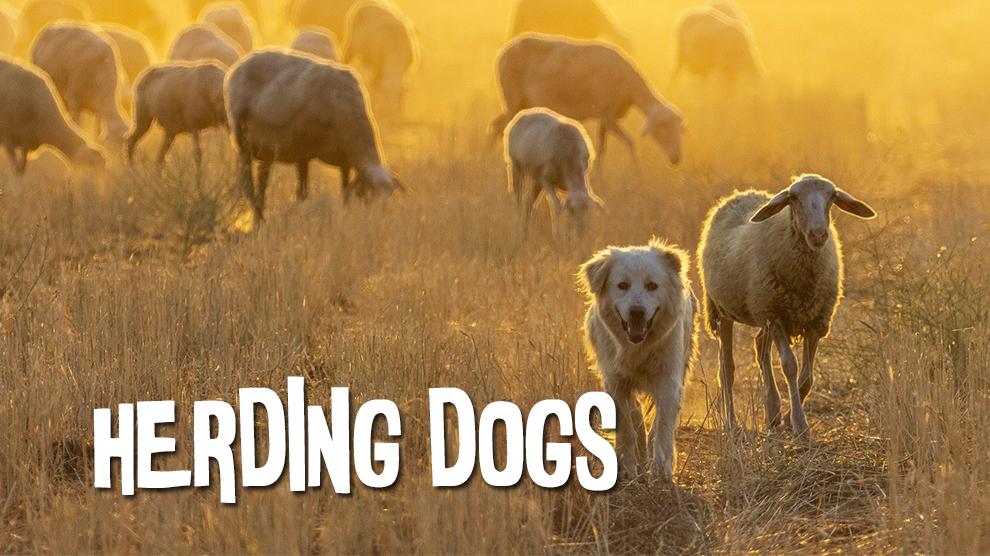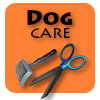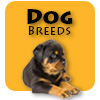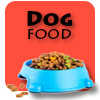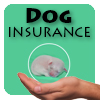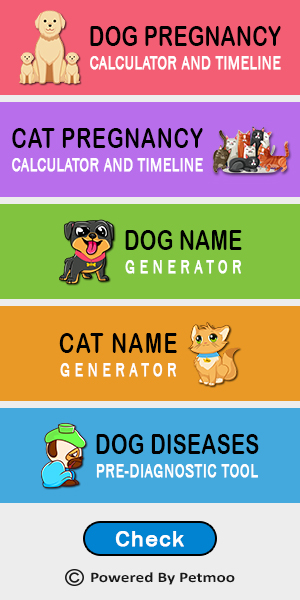Dog Pregnancy Calculator And Timeline
All Herding dogs carry an inbuilt instinct to manage and guide the movement and activities of other animals in general. They were mainly developed to protect, herd, and control livestock.
At present, some herding dogs like German Shepherd and Belgian Malinois are mainly seen in police work. Their breeding instinct is so dominant that Herding breeds are seen to herd small children of their owner’s family.
These herding dogs not only respond positively to training but also make brilliant companions in particular.
Australian Cattle Dog
The muscular but compact Australian Cattle Dog called as Queensland Heeler or Blue Heeler is somewhat connected to the Dingo. This Australian Cattle Dog is active enough to regularly fool their owner.
Appearance
The appearance suggests that this dog has the commitment and capacity to perform his allotted work however arduous. The presence of a hard muscular, balance, power, and substance must send the message of endurance, strength, and agility.
These herding dogs are always trustworthy, courageous, watchful, and intelligent with a strong devotion to duty.
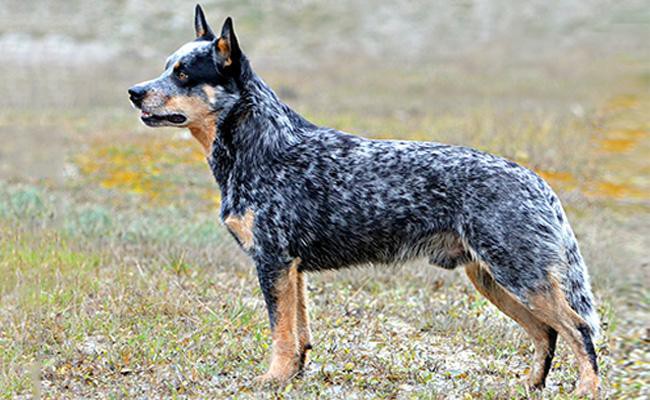
Size
Males around 18 to 20 inches at withers; females 17 to 19 inches at withers
Weight
These dogs weigh between 35 to 50 lbs.
Lifespan
The Australian Cattle Dogs live between 12 to 16 years of age.
Coat
The coat appears very smooth, with a thick undercoat and a double coat. The outer-layer is strong enough to withstand the heavy shower.
Under the body, the coat appears longer and forms a unique form of breaching near the thigh. On the head, the Australian Cattle Dog’s have short hair.
The hair, however, appears thicker and longer in the neck.
Color
They have either blue or red speckle. The dog may carry a colored mask around the eyes. These dogs also have tan markings on the hind legs, the hindquarters and jaws, on the forehead.
Grooming
No special care needed except regular brushing to keep away from shedding.
Temperament
The Australian Cattle dog’s commitment and loyalty make it a natural protector of the owner’s property, his herd, and the owner itself. While naturally alert to strangers, they are amenable to handling in the show events.
Health
Some of the common health problems that affect this breed include
- Hip dysplasia
- Progressive retinal atrophy or PRA
- Deafness
- Wax buildup in the ears
- Teeth problems
These health tests are recommended
- PLL DNA Test
- PRA Optigen Test
- BAER Test
- Ophthalmologist Evaluation
- Elbow Evaluation
- Hip Evaluation
Australian Shepherd
This dog is one of the main cattle dogs developed in “America”, a European dog breed crafted in California. The Australian Shepherd herding dog breeds are closely connected with America’s cowboy life.
Appearance
This is a brilliant working dog with powerful guarding and herding instincts. A loyal and hard working dog, Australian Shepherd’s are known to work tirelessly all day long.
They look medium size with bone, slightly longer, and well balanced with colouring that contains individuality and variety. These dogs appear muscular and solid, agile, animated, and attentive without cloudiness.

Size
The average size of the Australian Shepherd dog is 18-21 inches for female and 20-23 inches for a male.
Weight
The weight varies between 40-55 lbs and 50-65 lbs for female and male respectively.
Lifespan
The average lifespan of an Australian Shepherd dog is between 12 to 15 years.
Coat
The hair looks of medium length, weather resistant, straight to wavy, and of medium texture. The undercoat also changes based on climatic conditions.
Hair appears short and smooth on the ears and head, below the hocks, and front of forelegs. Backs of britches and forelegs are moderately feathered.
A moderate frill and mane are more common appear more prominent in males than in bitches.
Color
Red-all without or with white markings, tan, red merle, black, blue merle with no specific order of choice. White is seen more on the neck, muzzle underparts, legs, and chest.
The eyes are good when they are completely surrounded by pigment and color. In contrast, Merles become darker with age.
Grooming
The coat requires low maintenance. Depending on the habitat (snow, mud, and burrs), it should remain nice with an occasional bath and regular brushing.
Temperament
Not quite active and agile with strangers, Australian Shepherd’s are responsive, loyal, and very eager to please. They never behave hostile.
Quick to learn and alert, Australian Shepherd’s are easily trained. High-spirited and behaves strictly with uncooperative cattle but loyally follows his master’s command.
Health
They are normally strong and powerful dogs, and any well-informed breeder will check breeding stock for
- Cancer (not all types)
- Cataracts
- Epilepsy
- Hip dysplasia
- Aussie’s ear for wax build-up
- Teeth
It is very important to check and verify these documents before breeding Australian Shepherds
- OFA Evaluation – Hip Dysplasia
- OFA Evaluation – Elbow Dysplasia
- Annual eye check-up
Optional medical tests but recommended
- Collie Eye Anomaly (CEA)
- Multi-Drug Sensitivity (MDR1)
- Hereditary Cataracts (HSF 4)
Bearded Collie
The most adorable and boisterous droving dog from the land of castles, Scotland, the Bearded Collie loves the outdoor game. They are very co-operative and friendly by nature.
Appearance
This dog contains a medium length coat that permits a lot of daylight. Bearded Collies are lean and long, very strong, and seldom appears heavy. These dogs show a delightful inquiring expression.
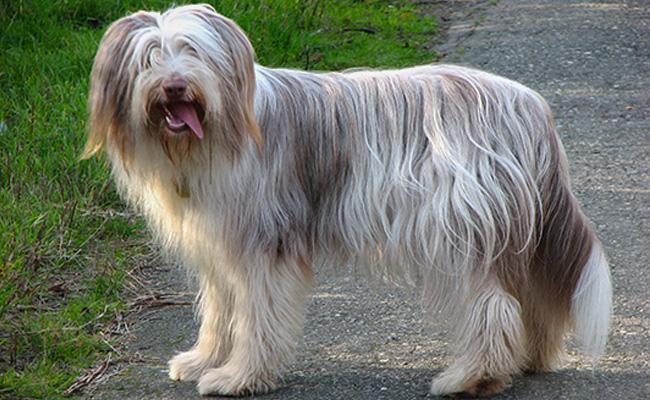
Size
Male Bearded Collies are between 20 to 21 inches and female bearded collies 21 to 22 inches.
Weight
The average weight of a Bearded Collie is around 45 to 55 lbs.
Lifespan
The average life expectancy of a Bearded Collie is around 12 to 14 years.
Coat
These breeds have double coats with a close, furry, and smooth undercoat. The outer coat appears shaggy, strong, harsh, and flat. The coat falls to either side and should never be fakely parted. The density and length of the hair are enough to create a secured layer.
On the head, the nose bridge is loosely covered with hair which looks longer on the sides. Around the cheeks, under the chin and lower lips, the coat gradually increases in size towards the chest, clearing the typical beard.
Color
All puppies are born without or with markings, fawn, brown, blue, and black. With time, the coat can appear to lighten, born black can turn grey to silver.
Fawns and blues also display colors from dark to soft tones. White appears only on the feet, legs, chest, and near the neck. It also appears on the tail tip, on the skull, and as a blaze.
The white hair fails to grow around the eyes and behind the shoulder.
Grooming
The first section deals with removing the foreign matter and tangles, assuming the dog has not into dirty activities. The second section consists of a weekly once schedule to completely remove dead hair using a comb, brush, and a pin rake.
This session takes around 30 minutes. Trim the Beardie’s nails on a regular basis as it can cause running and walking problems.
Temperament
Outgoing, smart, bouncy, and energetic, Bearded Collies are happy dogs that behave well as a friendly family friend. They move well with other family pets and dogs.
Health
These dogs are susceptible to
- Eye issues
- Allergies
- Autoimmune disease
- Hypothyroidism
- Hip dysplasia
- Ear wax problems
Before you buy from a reputable breeder, ask these certificates
- Thyroid checkup
- Ophthalmologist evaluation
- Hip problem
Beauceron
Mainly loved by women, the Beaucerons are a strong, versatile, spirited, and smart herders. These dogs are dashing and sensible by nature.
Appearance
A herding dog height which is solid, and well balanced without coarseness. The whole conformation sounds the impression of solidity and depth without bulkiness. They display the agility, endurance, and strength needed of this dog. The Beaucerons are energetic and alert with a nice carriage.
Males are larger and heavier than females. Females are feminine by nature but without any weakness in structure. This dog appears confident and discerning.
Size
Female Beaucerons are around 24 to 26.5 inches and males reach 25.5 to 27.5 inches.
Weight
The average weight of a Beauceron is between 70 to 110 lbs.
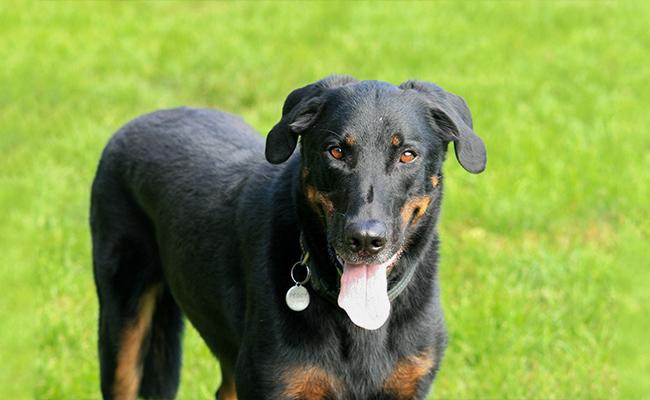
Lifespan
They live anywhere between 10 to 12 years
Coat
Normally between 1.25 – 1.5 inches thick, the outer coat grows close to the body. The hair grows longer in the vicinity of the neck section. The back of the thighs and tail are slightly fringed.
In short, the undercoat appears mouse grey, downy, dense, fine, and short.
Color
The tan is red and the black looks pure. The markings appear above the eyes, fading off near the cheeks, on the muzzle sides, and they never touch the ear undersides.
The hair grows longer near the neck section. The back of the thighs and tail are slightly fringed. In short, the undercoat appears mouse grey, downy, dense, fine, and short.
Tan (Harlequin), black, and Gray – Consists of a pattern of grey-blue patches distributed throughout the body. They are balanced with black as the base colour.
In the Harlequin – head totally grey, grey and black on either side of the body, too much grey in particular.
Grooming
This dog has a thick double coat; a water-resistant outer coat. The Beaucerons do shed but require very less grooming.
Weekly brushing with a soft-medium bristle brush, or use a hound glove. Nails look good when trimmed and also maintain the double dewclaws.
Temperament
Never worried, timid, or clumsy; self-assured and a nice companion. The Beauceron’s trait looks fearless and gentle. Any sign of unjustifiable roughness and fear is not an ideal scenario.
Health
Mostly, deep-chested dogs are prone to a stomach problem, especially bloat. The dog owners should have knowledge on how to handle it without getting anxious. The main disorders that need to be checked are allergies, eye issues, heart disease, and hip dysplasia.
Necessary test include
- Cardiac exam
- Ophthalmologist checkup
- Hip evaluation
Berger Picard
This dog is called coated breed sans any coat issues. The Picardy Sheepdog looks like a dog with an attitude of supreme charm. During the Second World War, the Berger Picard vanished into thin air but has regained popularity in the last decade or so.
Appearance
Mainly developed by the sheepherders and farmers of France’s Picardy region, these dogs have natural ears, quite usual than tall, well-built and sturdily built.
They appear alert and lively, and these sheep herding dogs are a working dog without refinement and exaggeration.
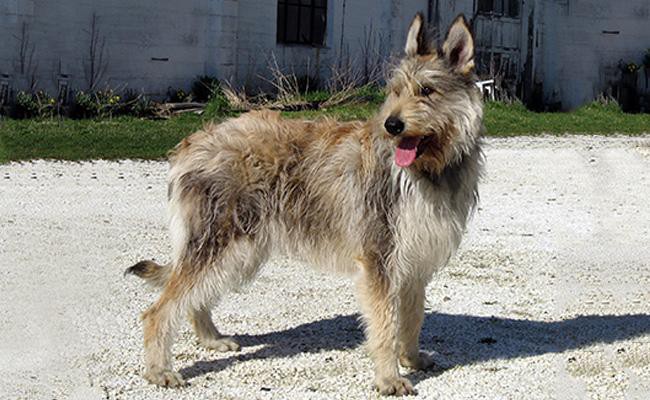
Size
Males are around 23.5 to 25.5 inches and females are near 21.5 to 23.5 inches.
Weight
The average weight of a Berger Picard is 50 to 70 lbs.
Lifespan
They live anywhere between 12 and 13 years
Coat
Crisp and harsh to the human touch carries a wave-like a pattern, and neither curly or flat. The undercoat appears dense, short, and soft. Ideal measurement is over 2 and 3 inches where the coat looks shorter.
The coat grows on the neck and head which give the dog its classic “Griffonage”. The Picard normally appears natural, rough, and rustic coat which is neither scissored or shaped or sculpted.
Grooming
The Picard’s double coat contains a dense, soft undercoat for protection covered by a water-resistant top coat. Use a slicker brush and a rake to remove dead hair in the shedding season. On other days, it’s enough if you brush him once a month.
The Picard requires only occasional baths and nails will appear neat when trimmed.
Temperament
Even-tempered, confident, alert, and lively. The Picard will never remain nervous and timid. Threatening and aggressive behavior should be condemned at the beginning itself.
Health
One of the most healthy dog breeds, the Berger Picard is prone to eye and hip problem. An Ophthalmologist and hip evaluation is the needed certificate for this dog.
Briard
Often described as a dog with a heart of gold, Briard looks like a dashing Frenchmen in a gallic suit.
Appearance
Alert and vigorous, Briard looks strong without coarseness, showing the agility and strength of a herding dog. A dog with an attractive appearance.
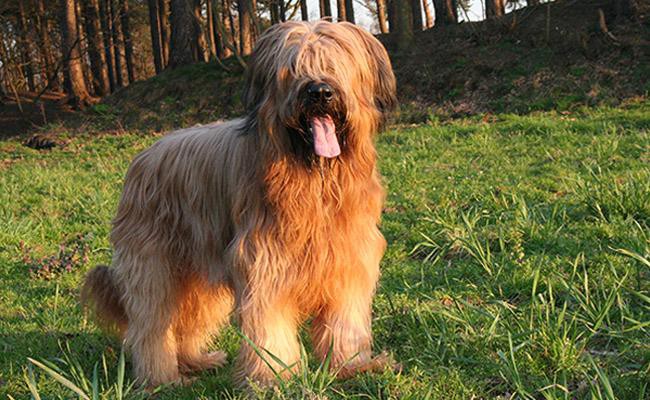
Size
Females around 22 to 25.5 inches and males reach between 23 to 27 inches.
Weight
The average weight of a Briard is between 55 to 100 lbs.
Lifespan
The Briard lives up to 12 years of age.
Coat
The outer coat appears dry, hard, and coarse. The shoulder hair can be more than 6 inches. Also, the undercoat looks tight and fine. The head consists of hair which looks lies down.
Color
The permitted colors are tawny, grey, and black. The rich shades are normally preferred. Combinations are allowed provided the transition takes place symmetrically and gradually.
White hairs are allowed and cannot exceed more than 1 inch.
Grooming
A Briard herding dog requires brushing many times a week, using the best-quality pin brush, totally to the skin. An undercoat rake removes dead hair and reduces shedding.
The overall quantity of baths a dog like Briard will require depends totally on the tasks and his lifestyle.
Temperament
The Briard is a fearless dog with no attitude. Obedient, gentle, faithful, and trained, the Briard carries a stellar memory.
This dog displays a genetic trait to protect master and home. Although he is aloof from unknown persons, he is loyal and loving to those he knows well.
Some are known to exhibit a certain level of independence.
Health Issues
The Briar is a healthy dog, and well-informed breeders screen their dogs for a lot of health issues.
- Kidney disease
- Exocrine pancreatic insufficiency
- Immune disorders
- Hypothyroidism
- Retinal folds
- Corneal dystrophy
- Cataracts
- Night Blindness
- Corneal dystrophy
Ask your breeder for this evaluation certifications
- Optigen DNA Test
- Ophthalmologist evaluation
- Hip evaluation

